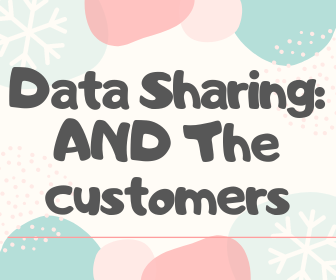It is a common marketing ideology that accesses to customers’ personal information is key to better delivery and more personalized customer experience. After all, that is what customer data delivers – giving you the ability to develop tailor-made connections with your customers.
However, this data sharing and how it benefits the customer is not usually an obvious fact, and assuming that customers fully understand what is going on can be catastrophic.
You could say that it is all embedded in the terms of use, but only about 1 out of 500 visitors might have the time and patience to go through your T&C. Even the ones that manage to open it do not pay full attention to what they are agreeing to, the Ts and Cs are lengthy for heaven’s sake.
In the long run, the greatest benefits delivered through data sharing is mostly enjoyed by the marketers who use the insights to remember customers in order not to always go through the process over again.
This begins to open up myriads of questions;
How do Customers Really Feel About Sharing Data?
According to research by Experian, customers’ attitude to data sharing can be categorized into four; the unaware, the accepting, the cautious, and the incognito.
Let’s see each one in-depth.
1. The Unaware
These set of customers will gladly offer their information, if that is standing in the way of the product or service they want to access. They have no idea what the data they are sharing will be used for or how the company plans to utilize it.
They are likely to remain like this provided they continue to enjoy value from the services or products offered. If they begin to have a negative perception of the value they are getting, their reaction and attitude can be really severe.
Handling these kind of customers is as simple as designing a way to get them to fully understand what data is needed and why it is needed. Your Ts and Cs should be clear and concise so that they can have a full grasp of what they are getting into.
Do not make the mistake of just letting sleeping dogs lie because they are quiet and unaware, give them all the assistance they need in understanding what data sharing means to them.
2. The Accepting
This category of customers actually understand what they are getting into when sharing data, but they don’t mind. They fully understand that companies really need their data in other to improve their experience, even though they have a bit of concern in the volume of data they have to share.
These set of people require a more sinister approach. You need to let them see more of how it benefits them when they share data with your website.
Also try to decongest the amount of data you are asking them to share. Focus on specifics and relevance, especially to the customer.

3. The Cautious
These set of customers may have had bad experiences sharing their data in the past. Some may have had their personal accounts hacked and used for fraudulent activities that they know nothing about. As a result of these experiences, they have developed a tough skin towards data sharing.
Before they release their information to any website or company, they take their time to verify the legitimacy of the company. They also take the pain to go through your Ts and Cs and be sure they are perfectly okay by it. Only then will they be willing to share data.
To deal with this kind of people, you need to be as transparent as possible. You need to assure and reassure them of the safety of their information. They need to easily understand that your company is credible and reliable in data security and protection. These information shouldn’t be difficult to find on your website.
4. The Incognito
These categories of customers have developed defense mechanisms to outsmart and maneuver the process of data sharing. They have figured out a way to just give you what they want to give you, whether it is all you need or not.
They have alternative email addresses different from their personal email addresses so that all your promotional materials go there without bombarding their personal mailboxes. They only check out the mails when they want to and not when they are prompted to.
Getting across to this group of people is a gradual process. You need to gradually build trust with them and they can open up to you one step at a time.
Where do We Go From Here?
Regardless of the importance of data sharing in creating better customer experiences, the use of the supplied data still gives a number of understandable concerns to a lot of customers.
Some of these concerns include identity theft, intrusive and irrelevant advertising or several undesirable communications, like spam messages.
Because the business world is driven by data, businesses have a responsibility to make it clear to the customer that the data they provide is used for good purposes. That it helps to bring about quality service delivery and enhances their experience as customers. This should be properly and voraciously advocated.
There should be controlled usage of shared data such that it has value for the rights and personalities of the customers sharing the data. As much as you have customers who are comfortable sharing their data, you still have those who are very much uncomfortable sharing data. These factors need to be put into consideration.
Generally, people understand that the value that they get from a data-driven, digital economy when they consume services comes at some cost to then, their personal information.
However, the recognition of ownership of shared data by the data sharer should be treated with the utmost importance. Though we still have people who hide their real self when interacting with brands, with transparency and trust developed, data sharing will be seen as crucial by the customer.
Finally, marketers need to understand that customers must get value for what they are giving and this should be topmost on their mind when they request data from customers.
So before you even go asking, be sure you have plans to provide value for the customer, and this value should be clearly spelled out so the customer completely understands what they are getting for sharing data.

